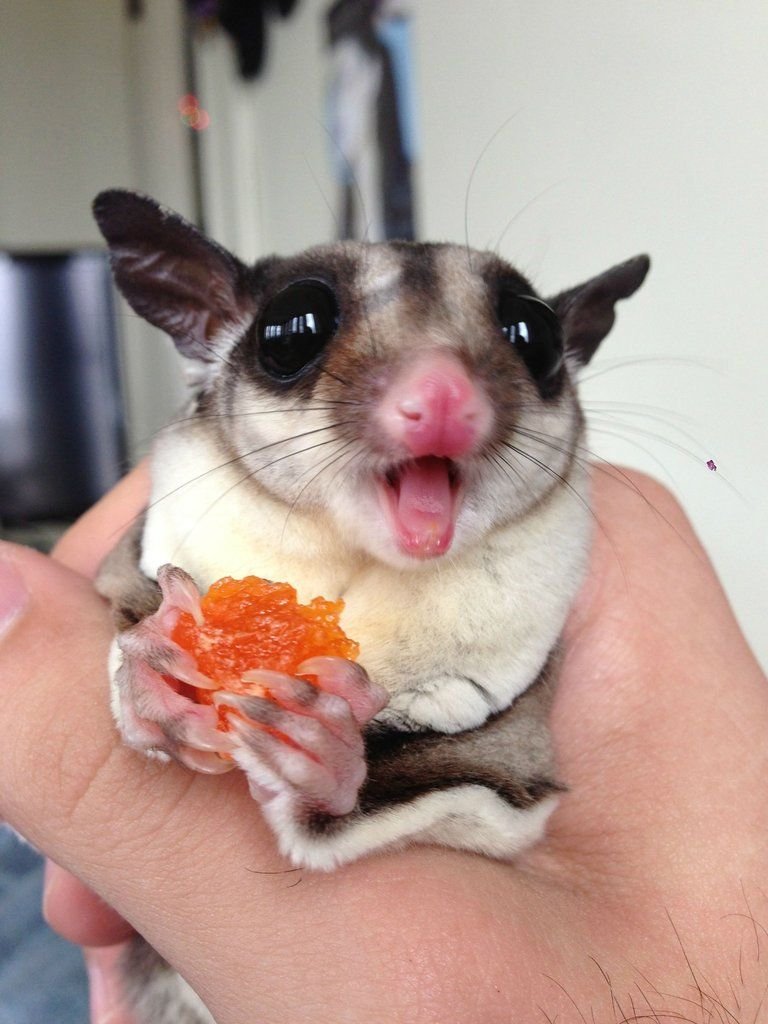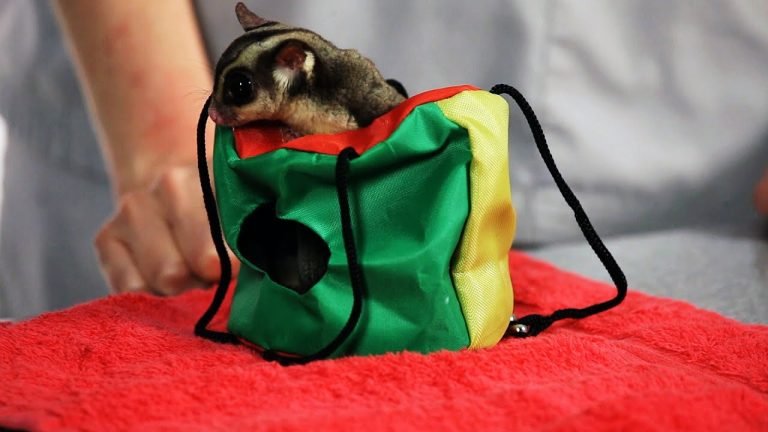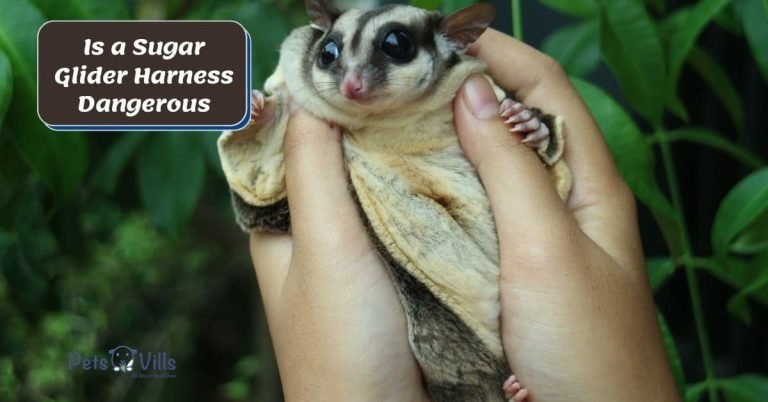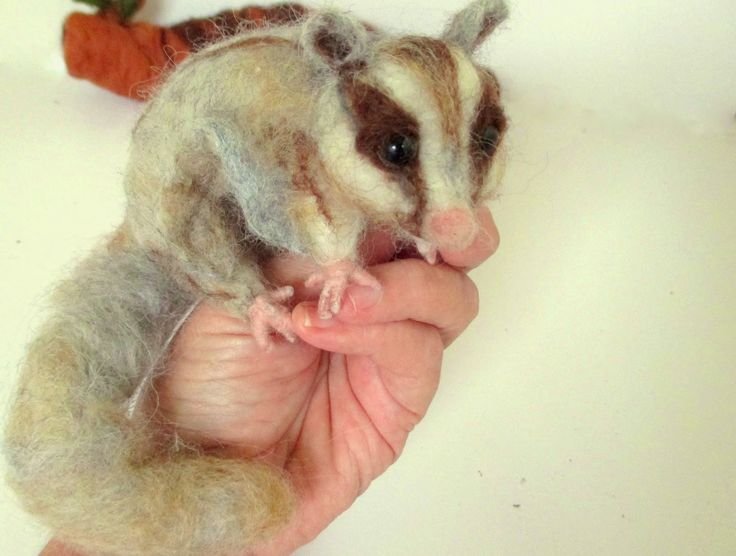Sugar Glider Quarantine VS Introduction New Pet Guide
Are you ready to bring home a new furry friend? Before diving into the world of sugar gliders, it’s crucial to understand the importance of quarantine. Just like with humans, animals can carry diseases that could harm your existing pets. By implementing a proper quarantine process, you can ensure the health and safety of all your beloved companions.
But how do you introduce new sugar gliders to your guinea pig, ferret, or rabbit? It’s not as simple as throwing them all together and hoping for the best. We’ll guide you through the steps to create a safe and comfortable space for your new pet while minimizing stress and potential conflicts.
Following a thorough quarantine not only protects your current pets but also offers numerous benefits for your incoming sugar glider. So grab some newspaper, get ready for an exciting journey, and let’s explore the ins and outs of sugar glider quarantine versus introducing them to other animals. Your furry friends will thank you!
Why Quarantine is Essential for Sugar Gliders
Quarantine plays a crucial role in ensuring the health and well-being of your sugar gliders. By following proper quarantine procedures, you can prevent the spread of diseases among your glider colony and facilitate a smooth transition for new pets. Here’s why quarantine is essential:
- Prevent the spread of diseases: Quarantine helps to minimize the risk of introducing contagious illnesses to your existing sugar gliders. Isolating new gliders allows you to observe them closely for any signs of illness before introducing them to the rest of the colony.
- Reduce stress and ensure a smooth transition: Sugar gliders are highly social animals that thrive on routine and familiarity. Introducing new pets directly into an established group can cause stress and disrupt their harmonious dynamics. Quarantine provides an opportunity for new gliders to adjust to their surroundings, reducing stress levels and ensuring a smoother transition.
- Protect the health and well-being: By quarantining new sugar gliders, you safeguard not only their own health but also that of your entire colony. It allows you to monitor their behavior, appetite, and overall condition closely, enabling early detection of any potential health issues.
- Increase chances of successful introductions: Introducing unfamiliar gliders without quarantine can lead to conflicts within the colony. Through proper quarantine, you can gradually introduce scent swapping techniques or supervised interactions, increasing the likelihood of successful introductions between sugar gliders.
By prioritizing quarantine measures for your sugar glider pets, you demonstrate responsible ownership while taking proactive steps towards maintaining a healthy and happy colony. Remember, prevention is key when it comes to safeguarding their well-being!
Step-by-Step Guide: Introducing Sugar Gliders to Each Other

Gradually introduce scent swapping between gliders. Allow the sugar gliders to become familiar with each other’s scents before any physical interaction takes place. This can be done by placing a piece of fabric or bedding from one glider’s cage into the other glider’s cage. The gliders will start associating the scent with something positive and become more comfortable in each other’s presence.
Use supervised play sessions to promote positive interactions. Once the gliders are accustomed to each other’s scents, you can begin introducing them during supervised play sessions. These sessions should take place in a neutral area, such as a glider-proofed room, where both gliders have equal access to resources and space. Observe their behavior closely and ensure that they engage in playful activities rather than displaying aggressive behavior.
Monitor behavior and intervene if necessary during introductions. While introducing sugar gliders, it is crucial to keep an eye on their interactions. Watch out for signs of aggression or dominance, such as biting, lunging, or excessive vocalizations. If any negative behaviors occur, separate the gliders immediately and try again at a later time.
Follow a slow integration process to minimize conflicts. It is essential not to rush the introduction process between sugar gliders. Take your time and allow them to gradually get used to each other’s presence through scent swapping and supervised play sessions. Rushing this process may lead to conflicts and unnecessary stress for the gliders.
By following these steps, you can successfully introduce new sugar gliders to each other while minimizing conflicts and promoting positive interactions among them.
The Benefits of Proper Quarantine for New Sugar Glider Pets
Identifying any potential health issues before introducing new pets is crucial. During the quarantine period, it’s essential to give each sugar glider individual attention and time for bonding. By establishing trust and building relationships with each glider separately, you can ensure a smoother introduction process.
- Health Issues: Quarantine allows you to identify any potential health issues in your new sugar gliders. This step is especially important when introducing them to your existing household pets. It helps prevent the spread of diseases and ensures the well-being of all animals involved.
- Bonding Time: During quarantine, spend quality time with each sugar glider individually. This one-on-one interaction will help them become familiar with you and their new environment, building trust and reducing stress.
- Trust Building: Taking the time to establish trust with each sugar glider separately is vital. They may have come from different backgrounds or breeders, so building a strong bond will help create a harmonious living situation once they are introduced.
- Smooth Introduction: Allowing adjustment time through quarantine makes the introduction process smoother for your sugar gliders. It gives them an opportunity to acclimate to their surroundings and adjust to their new diet and routine.
Quarantine not only protects your existing pets from potential health risks but also ensures that your new sugar gliders receive proper care from day one. Remember, a good breeder will provide guidance on proper diet, preventing issues like overgrown teeth or appetite loss by providing necessary vitamins and a balanced diet.
By following these guidelines for proper quarantine, you can set up your sugar gliders for a happy and healthy life together as household pets!
Setting up a Safe and Comfortable Quarantine Space

When bringing a new pet into your home, it’s crucial to set up a safe and comfortable quarantine space. This isolated area helps protect both your existing pets and the newcomer from potential health risks. Here are some essential steps to follow:
- Create an isolated area away from other animals in your home:
- Select a separate room or section of your house where the new pet can stay.
- Ensure this space is away from other animals to prevent any direct contact.
- Provide appropriate housing, including cages, bedding, and toys:
- Set up a suitable enclosure such as an aquarium or cage for the new pet.
- Include comfortable bedding materials for them to rest and sleep on.
- Offer engaging toys that will keep them entertained during their quarantine period.
- Maintain proper hygiene by cleaning regularly and using disinfectants:
- Clean the quarantine area regularly to minimize the risk of spreading germs.
- Use appropriate disinfectants recommended for small animal habitats.
- Control temperature, humidity, lighting, and noise levels in the quarantine area:
- Ensure the temperature remains within a comfortable range for your new pet.
- Monitor humidity levels to prevent dryness or excessive moisture.
- Adjust lighting conditions to mimic their natural environment.
- Keep noise levels low to reduce stress during their isolation period.
By following these guidelines, you can create an ideal quarantine space for your sugar glider or any new pet you bring home. This supportive care ensures their ease of transition into their new home while maintaining a healthy environment. Remember to consult with a veterinarian about necessary vaccinations and feeding requirements specific to sugar gliders in captivity.
Bonding Techniques for Sugar Gliders during the Quarantine Period
During the quarantine period, it’s essential to establish a strong bond with your sugar glider. Here are some effective techniques to help you build trust and create a lasting connection:
- Spend quality time with each sugar glider individually every day: Dedicate separate bonding sessions for each of your sugar gliders. This one-on-one time allows you to focus on their unique needs and personalities.
- Offer treats as positive reinforcement during bonding sessions: Use treats as a way to reward good behavior and create positive associations. Whether it’s a small piece of fruit or a favorite snack, these treats can strengthen the bond between you and your sugar glider.
- Engage in gentle handling and socialization activities regularly: Gradually introduce handling by using slow movements and speaking softly to your sugar glider. Encourage them to explore their surroundings while providing reassurance through touch.
- Encourage trust-building through patience, consistency, and calmness: Building trust takes time, so be patient with your sugar glider. Consistency is key – maintain a routine that includes regular interaction and playtime. Remain calm throughout the process, as sudden movements or loud noises may startle them.
Remember that bonding should be an enjoyable experience for both you and your sugar glider. Take the time to understand their unique behaviors and preferences while respecting their boundaries.
By following these techniques, you can establish a strong foundation of trust with your sugar gliders during the quarantine period, ensuring a harmonious relationship built on mutual understanding.
Now that you’re equipped with these bonding tips, get ready to embark on an exciting journey of companionship with your furry friends!
Conclusion: The Importance of Sugar Glider Quarantine and Successful Introductions
In conclusion, ensuring a proper quarantine period for your sugar gliders is crucial for their health and well-being. By following a step-by-step guide to introducing them to each other, you can create a harmonious environment that promotes bonding and reduces stress.
Proper quarantine not only helps prevent the spread of potential diseases but also allows new sugar glider pets to acclimate to their new surroundings before being introduced to existing ones. This precautionary measure significantly reduces the risk of conflicts and ensures a smoother transition for all parties involved.
Setting up a safe and comfortable quarantine space is essential. Providing an enriched environment with appropriate housing, food, and toys will help keep your sugar gliders happy and healthy during this period. Bonding techniques such as gentle handling, scent swapping, and supervised playtime can further strengthen the relationship between you and your pets.
Remember that successful introductions require patience and dedication. Taking the time to establish trust through proper quarantine will set the foundation for long-lasting bonds with your sugar gliders.
To ensure the best care for your sugar gliders, it’s important to stay informed about their specific needs. Stay up-to-date with reputable sources, consult experienced owners or veterinarians, and join online communities where you can learn from others’ experiences.
By prioritizing the health and well-being of your sugar gliders through proper quarantine procedures and successful introductions, you are providing them with the best chance at a happy life in their new home.
FAQs
1.How long should I quarantine my sugar gliders?
It is recommended to quarantine new sugar gliders for at least 30 days before introducing them to existing ones.
2.Can I skip the quarantine process if my sugar gliders seem healthy?
No, even if they appear healthy, it’s crucial to go through the full quarantine process to ensure the well-being of all your sugar gliders.
3.What should I do if my sugar gliders show signs of illness during quarantine?
If you notice any signs of illness, it’s important to consult a veterinarian immediately for proper diagnosis and treatment.
4.Can I introduce my sugar gliders to each other before the quarantine period ends?
No, it’s essential to complete the full quarantine period before attempting introductions to minimize the risk of disease transmission.
5.How can I make the quarantine space more enriching for my sugar gliders?
Providing a variety of toys, branches for climbing, hiding spots, and interactive feeding puzzles can help keep your sugar gliders stimulated during their quarantine period.






